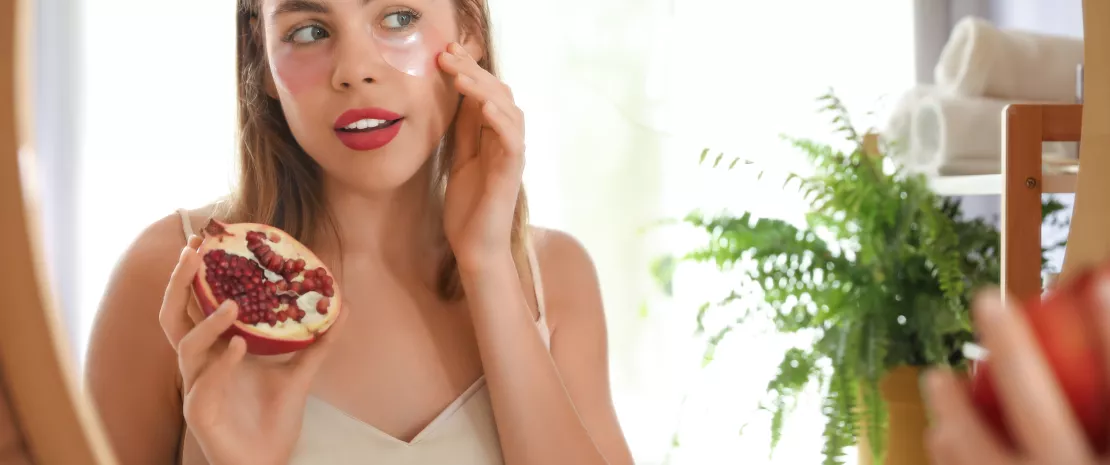Pomegranate to the rescue of disrupted skin microbiota
Pomegranate contains substances that may contribute to rebalancing the populations of micro-organisms living on the surface of our skin. Researchers have shown that an extract of the peel weakens pathogenic bacteria and reinforces beneficial bacteria.
- Learn all about microbiota
- Microbiota and related conditions
- Act on your microbiota
- Publications
- About the Institute
Healthcare professionals section
Find here your dedicated section
Sources
This article is based on scientific information

About this article
A natural, non-toxic and ecologically responsible product that improves the equilibrium of the skin microbiota and helps fight against skin problems: you thought it was a dream? A team of Italian researchers has done it...using pomegranate skins that were about to be thrown away! 1
This inedible part makes up 50% of the fruit. It usually ends up in the trash during the manufacture of pomegranate juice and extracts. However, it contains the majority of the precious polyphenols found in pomegranate, some of which possess antibacterial properties that are of interest for health.
The Italian researchers wanted to know whether, by making using of these peels to extract their precious components, it would be possible to develop a product capable of re-establishing the equilibrium of the skin microbiota and improving skin health.
The battle: good bacteria vs. bad bacteria
Dysbiosis of the skin microbiota, characterized by the proliferation of pathogenic bacteria to the detriment of beneficial bacteria, has been implicated in numerous skin problems, such as acne, psoriasis and atopic dermatitis.
Skin disorders
The researchers first took samples of the skin microbiota from the skin of 9 young volunteers, 3 of whom suffered from skin problems linked to atopic dermatitis. From these samples, they extracted:
- Staphylococcus aureus, pathogenic bacteria responsible for skin dysbiosis
- Staphylococcus epidermidis, known for its beneficial effects and its ability to restore the integrity of the skin barrier.
Meanwhile, the scientists prepared an extract of pomegranate peel (Punica granatum L.) using energy-saving extraction methods and recyclable solvents.
After verifying that it was non-toxic, they placed the product in contact with the bacteria taken from the volunteers.
Twofold effect of pomegranate
The result: the pomegranate extract has both a significant antimicrobial effect on the pathogenic S. aureus and a protective effect on the beneficial S. epidermidis.
For the researchers, these effects are most likely connected to the phenolic components of pomegranate: catechins, quercetin, gallic acid, etc. These act in a targeted manner, on the one hand preventing pathogenic bacteria from sticking to the skin and forming protective biofilms, and on the other hand stimulating the ability of beneficial bacteria to synthesize biofilms.
Neutralizing the enemy is an art!
Everyone has the harmful Staphylococcus aureus on the surface of their skin. Most of the time, however, it does not proliferate.
Why? Because the “good” bacteria of the skin microbiota secrete an ultra-sophisticated arsenal of formidable small molecules (bacteriocins, antibiotics, short-chain fatty acids, antimicrobial peptides, etc.) capable of blocking the multiplication of Staphylococcus aureus and inhibiting its proliferation.
In addition, by regulating the inflammatory response, contributing to the homeostasis of skin cells and maintaining the integrity of the epidermis, good bacteria contribute to microbial equilibrium. Nice, but strong!
Clinical trials will need to be carried out before it is possible to confirm the ability of this extract to prevent, alleviate or cure skin problems, particularly those linked to antimicrobial-resistant bacteria.
If the results are positive, this would provide further evidence that it is possible to integrate the health of the ecosystem with human health using a “One health” 2 approach.
















